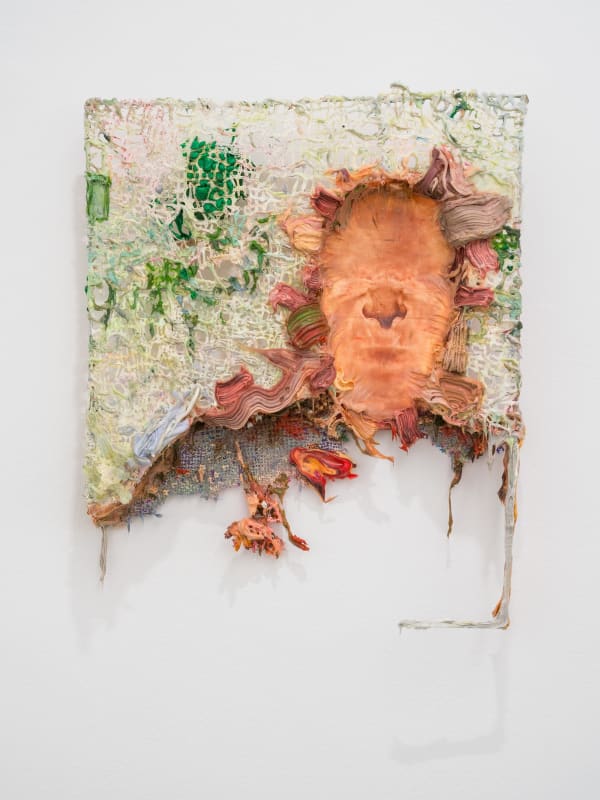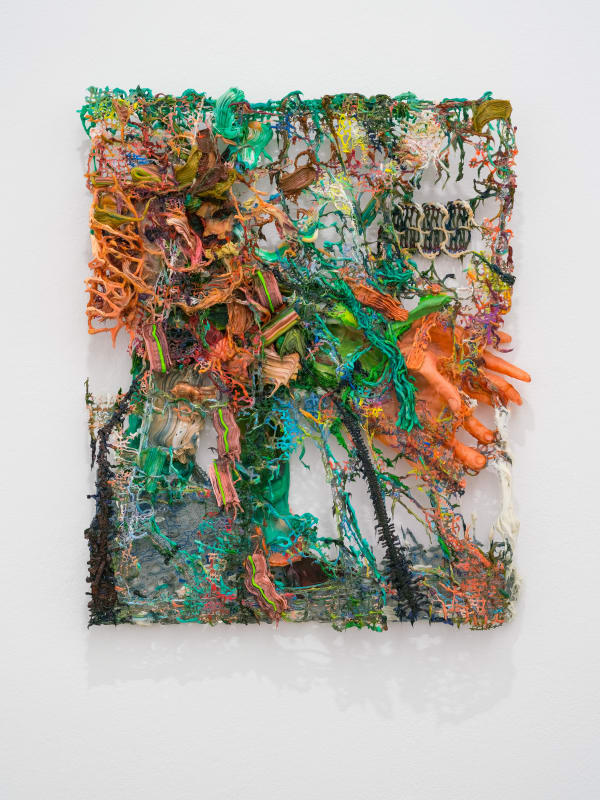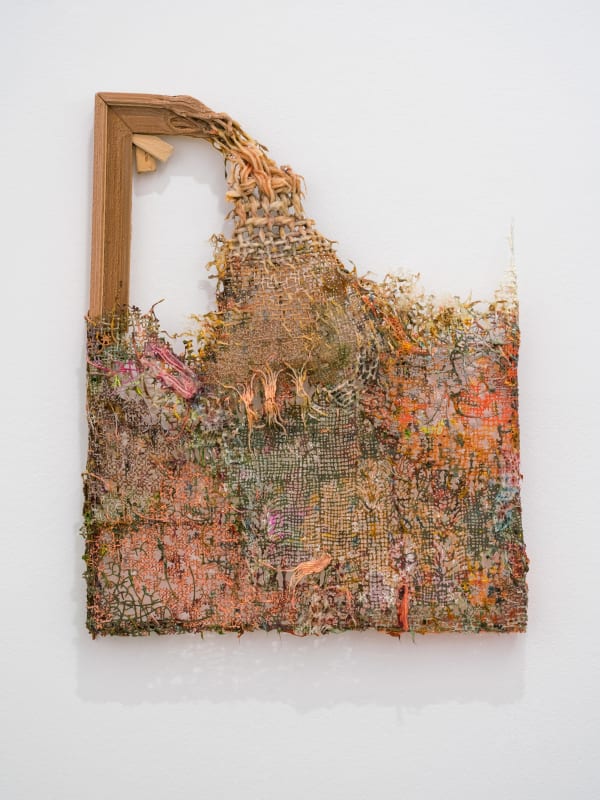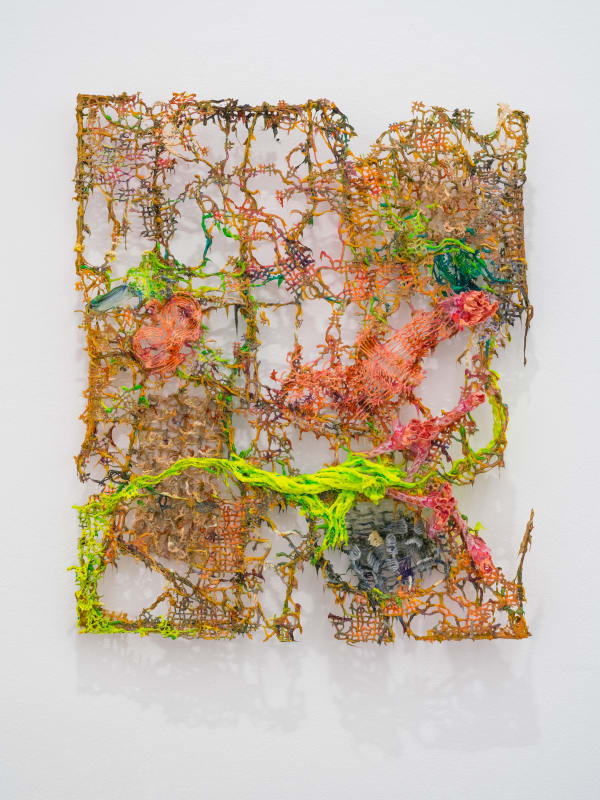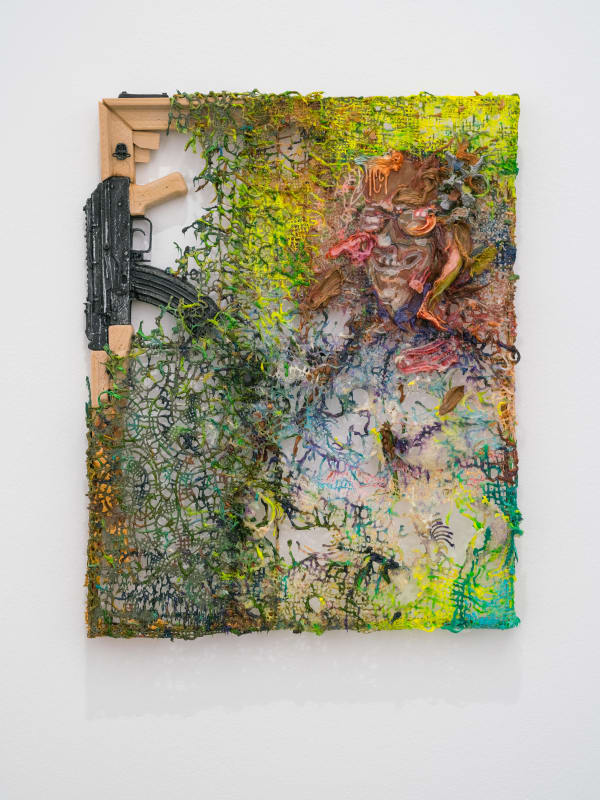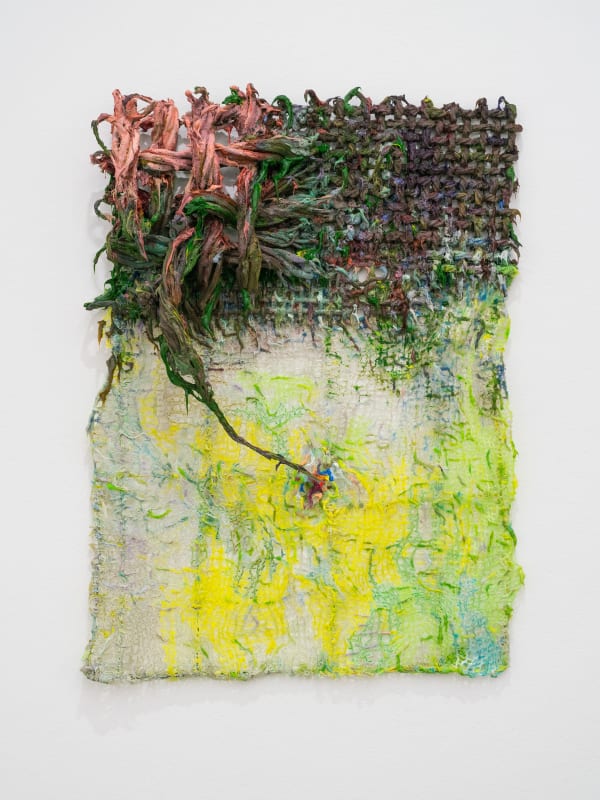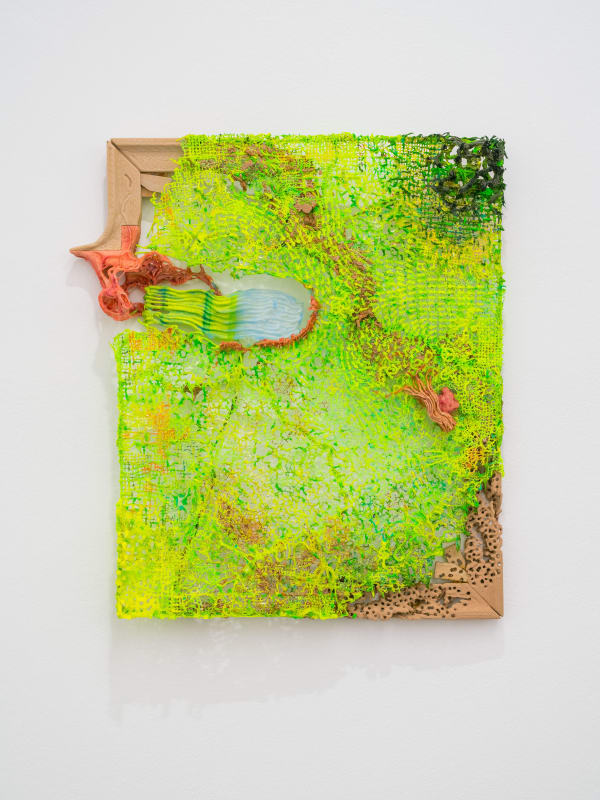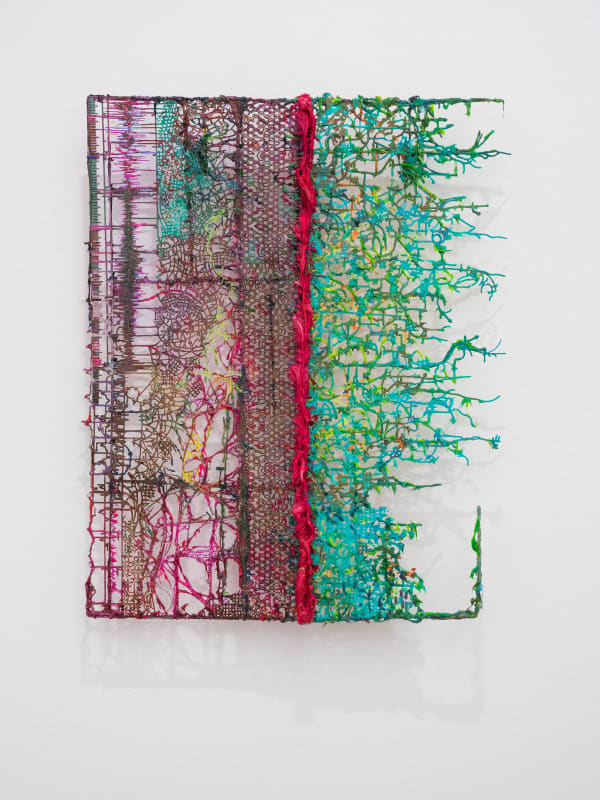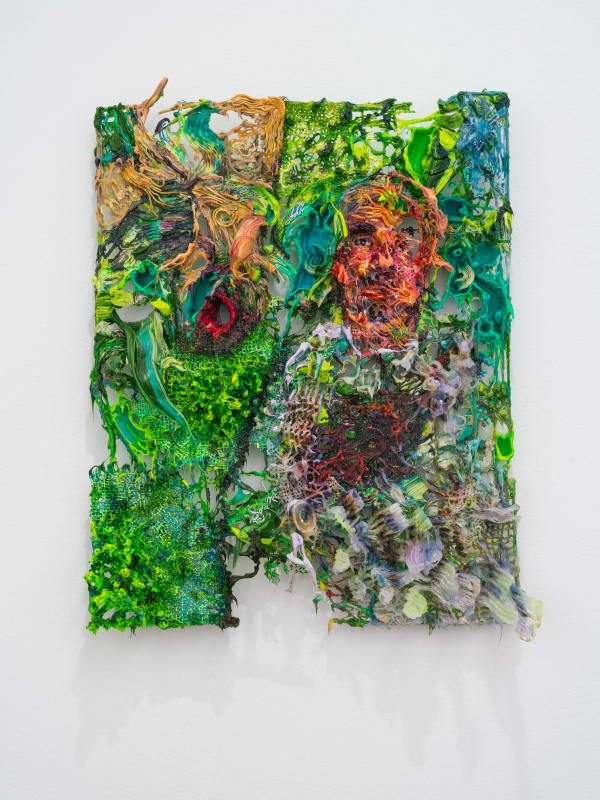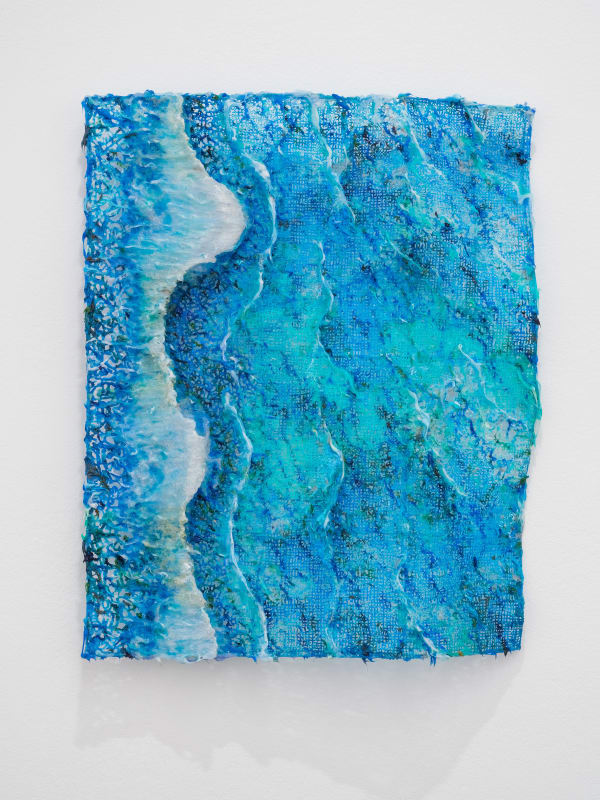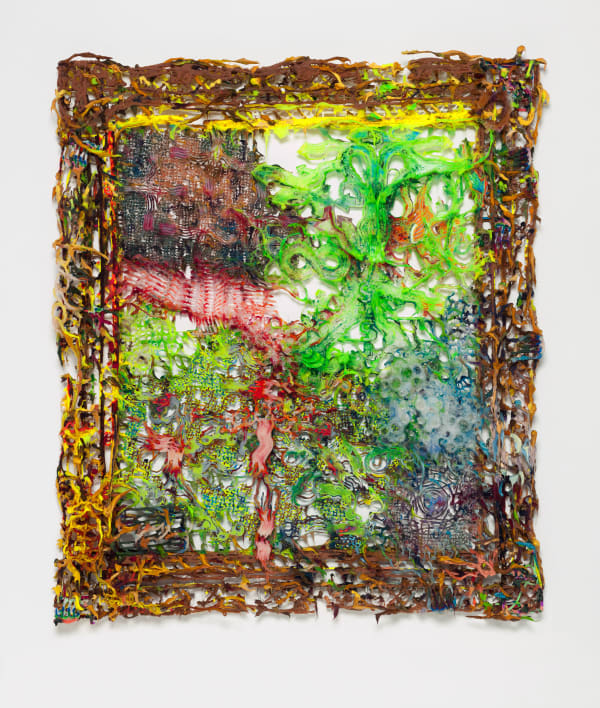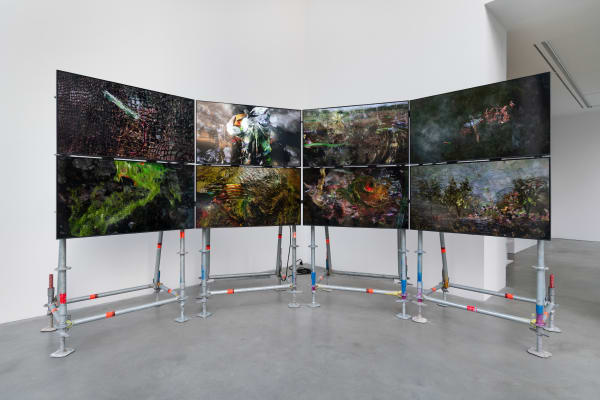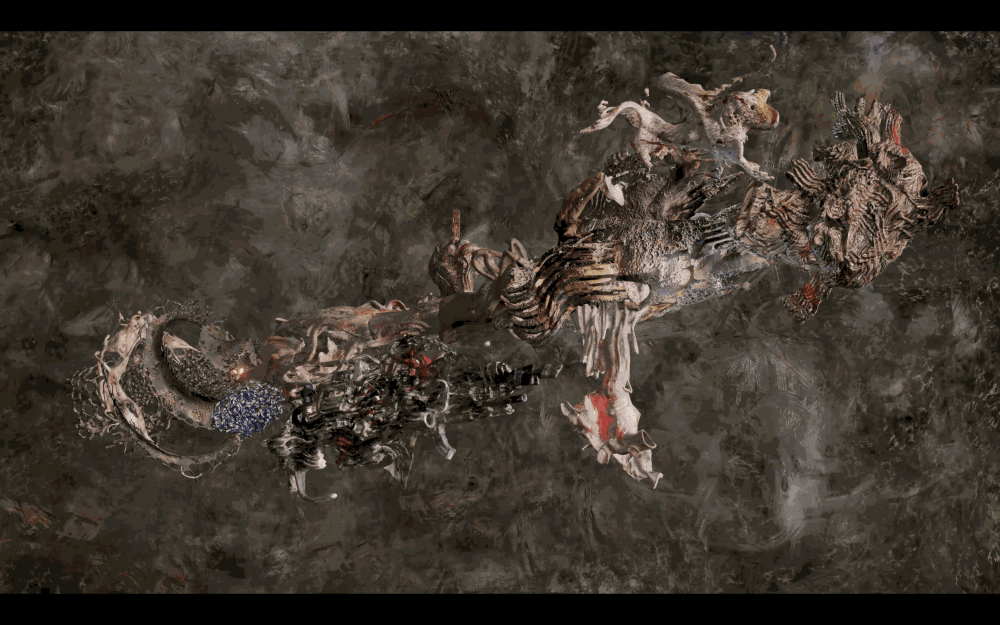FLEX-PAINTANTS: FABIAN MARCACCIO
-
Introduction
Galerie Thomas Schulte presents Fabian Marcaccio’s Flex-Paintants—the artist’s fifth solo exhibition with the gallery—featuring new sculptural Flex-Paintants in the gallery’s main space and digital Animation Paintants in the Corner Space. Created in the last two years during the pandemic, the works on view reveal a pronounced corporeality, even when set in tension with their own dissolution. Here, Marcaccio again works to expand the concepts, material, space, and temporality of painting in the digital age.
The Flex-Paintants are hand-painted and composed of 3D-printed polyurethane and silicone. Bridging digital technology and organic matter in aesthetic, material, and production, the resulting images are highly articulated and textured, though in varying states of abstraction and decomposition. They are set in dialogue with one another, the space, and the viewer as the boundaries of the painting medium are both extended and broken down. Between dissolution and coagulation, they are interstitial beings: from their flexible silicon makeup to their phenomenological effects. Hung relatively low and hovering slightly from the wall’s surface, intricate shadows are produced around their edges and in their gaps.
In tandem with Marcaccio’s process-oriented approach, the experience of viewing—the process of perception—becomes a source of action in the paintings: their appearance changes depending on our position and proximity. A ghostly image seen from a distance reveals a complex (re)organizing structure when seen up close. At times, they cannot be fully experienced unless approached from a particular angle. The titular words in Love-Hate, for example, are given particular weight—visible along two opposing edges of the work, the letters form the supporting element on which the entire painting quite literally hinges.
Marcaccio’s term paintant—a composite of painting and mutant—gives expression to the transformation the images seem to undergo, specifically in the context of biogenetics and the emergence of new genetic character. The Flex-Paintants are sometimes even suggestive of molecular structures—as though we are seeing the DNA of a painting—like in the delicate interweaving of Ready-Made Identity. Their fibers alternately intertwining and coming undone, they are like paintings being turned inside out—we are not looking at, but into them.
Identifiable figures and forms, or else suggestions of them, sometimes come through. We might recognize faces, grids and networks, plant-like tendrils and greenery, or some combination. Fingers meld with green vines, for example, simultaneously reaching out and getting reabsorbed into the elaborate tangle of constituent color segments. In one work, the indent of a face starts to resemble a pool—becoming a source of reflection for the face of the viewer, while burrowing into the surface like a muddy footprint.
What is being emphatically demonstrated is that, like the body, painting is wet, ever-changing and in flux. Taking shape as a series of frozen moments, they could liquefy in an instant, further evolving into yet unseen variants. One painting, which suggests ocean waves, most clearly embodies this wetness. The image is taken up entirely by shades of blue with white foamy ridges. The reference is clear, but, as in Marcaccio’s work more broadly, it has been flipped around, or mutated: this body of water is shown vertically, the anchor to the horizon removed, becoming uncanny.
The hand-painted and digital animations in the Animation Paintants are dematerialized by their very nature, though a certain bodily wetness still pervades—through goopy, translucent liquids and sticky biomorphs that resemble innards, skin, or open wounds. Installed in the street-facing Corner Space of the gallery, the works are also interstitial. But whereas the Flex-Paintants beckon more intimate proximity and one-on-one attention, the Animation Paintants are situated between inside and outside—they overflow onto the street, where they can be seen as a group.
Here, painting is conceived as a temporal event. Brushstrokes swim by on screen as a heaving body of viscous, heavily mixed pigment ripples and erupts in The Leroys. A shimmering surface of brushstrokes, pulsating and skin-like, then lights up in flashes like a neural network. In Desprend, a structure of ropey tentacles recalling woven textile, gnarled branches or muscle tissue briefly catches a ghostly white sheet in its net. Subsequently, and repeatedly, the sheet falls through its gaps and is caught again as gushes of multicolored liquids splash up against it in a continual remaking.At times, atmospheric and titular cues bring the abstract animations closer to a specific reference. Like The Flight, for instance, in which the title, a backdrop of greenery, and sounds like stormy winds morph the floating brushstrokes into a flock of birds and flapping wings. While in Emergers, highly articulated brushstrokes become alien creatures resembling organs or tissue, rising up from a pool of sickly green ooze. The title Emergers even seems to encapsulate the current body of work as a whole. The abstract and fluid nature of both the Flex-Paintants and the Animation Paintants leave them susceptible to myriad associations, bringing an increased sense of intimacy and immediacy: always emerging, they never fully crystallize.
Marcaccio locates the specificity of painting in its wetness. It’s also the characteristic that, for him, brings the medium into close proximity with the organic. In the works on view, digital media are employed to extend both their own limits and the aesthetic possibilities and behaviors of painting—with all of the liquid processes that making entails. The result is a pictorial continuity that absorbs, breaks apart and reorganizes into a complex composite, an organic whole.Text by Julianne Cordray
-
Works
-
Installation Views
-
Inquire about works by Fabian Marcaccio

-
Artists on view

